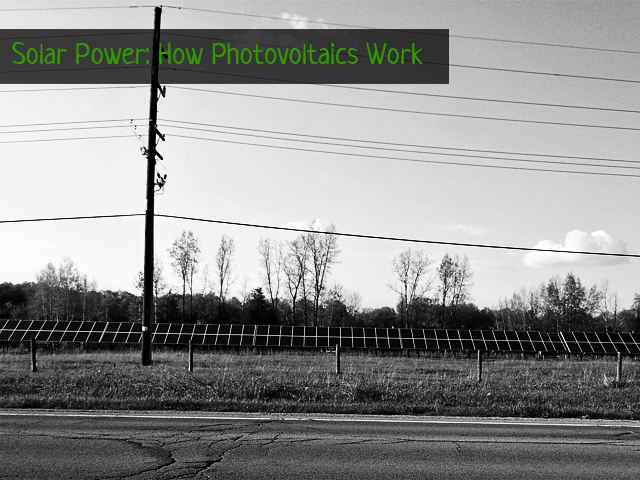 Because the way we create electricity from solar power is completely different from all the other electricity generation I’ve written about, I’m going to break this topic into two parts. Today we’ll cover the science of how we make electricity from sunlight.
Because the way we create electricity from solar power is completely different from all the other electricity generation I’ve written about, I’m going to break this topic into two parts. Today we’ll cover the science of how we make electricity from sunlight.
Photovoltaics
Photovoltaics or solar cells, are what we use to change the light from the sun into electricity. Solar cells are made of a semiconductor material, typically silicon. The silicon contains a small amount of phosphorus mixed into the crystal structure. This phosphorus provides free electrons. The light energy from the sun moves these free electrons. And voila, give the free electrons a pathway to move through and you have made electricity.
The trick is to get enough of those free electrons moving and to get them moving further.
Electrons move different distances depending on the energy in light that hits them. Light is composed of various wavelengths which which each have a different amount of energy. We see the wavelengths as different colors, electrons see the wavelengths as different distances to move. With solar power, we want to catch all the wavelengths of light, and we want it all to make the free electrons move. We also want the electrons to move as far as possible because this will produce the highest voltage. Using both low and high energy light is difficult, and so the structure of the semiconductor must be very well designed and controlled. As you might guess, this is a difficult and expensive process. Making even a slight increase in solar power efficiency represents a huge breakthrough in science.
If you’re interested in learning the more detailed science of solar cells, this article is a great place to start.
…
For an introduction on sources of electricity, look here.
For an explanation of how we make electricity, look here.
Clean Coal
Nuclear Energy
Hydroelectricity
Wind Power
Geothermal Electricity
Oh, hey, Building Earth has a facebook page now. Keep up to date on posts and other interesting green news by liking us!
